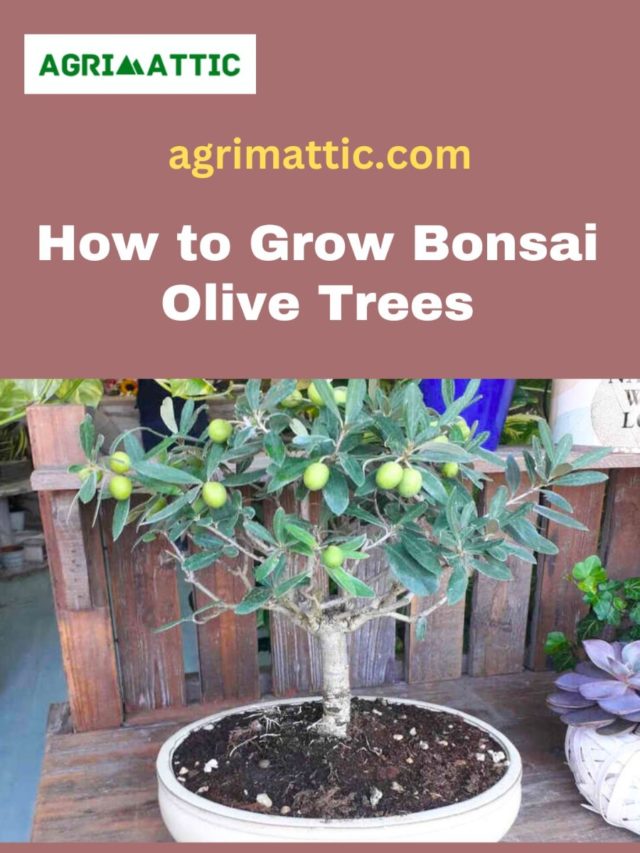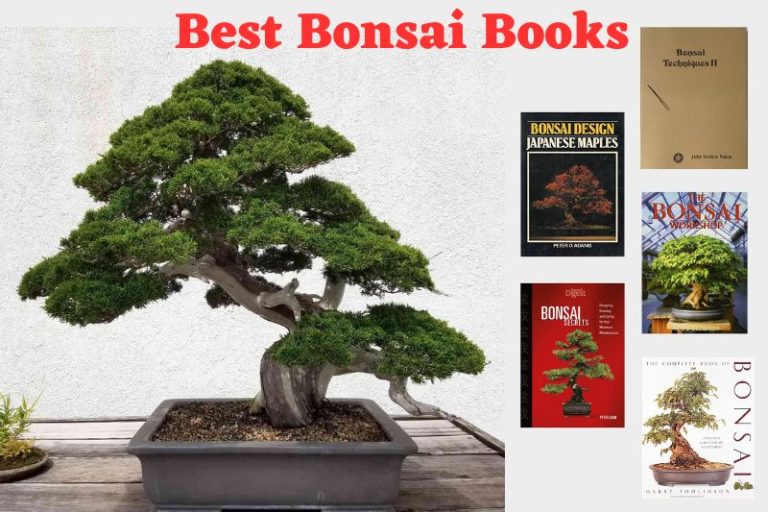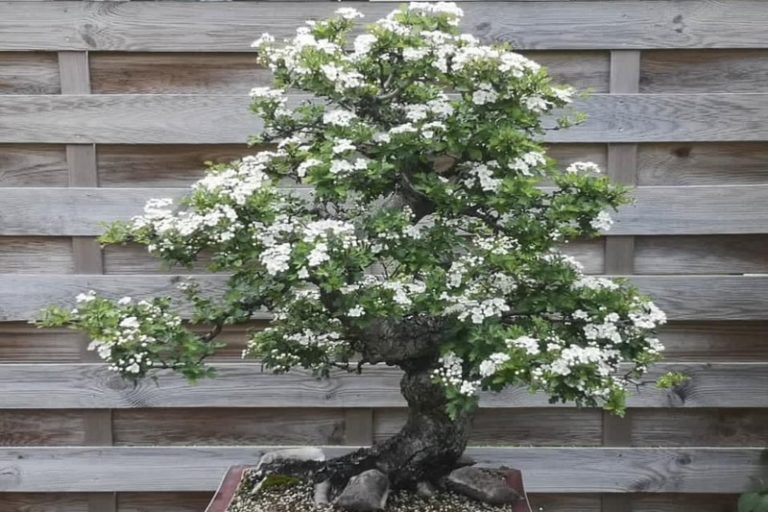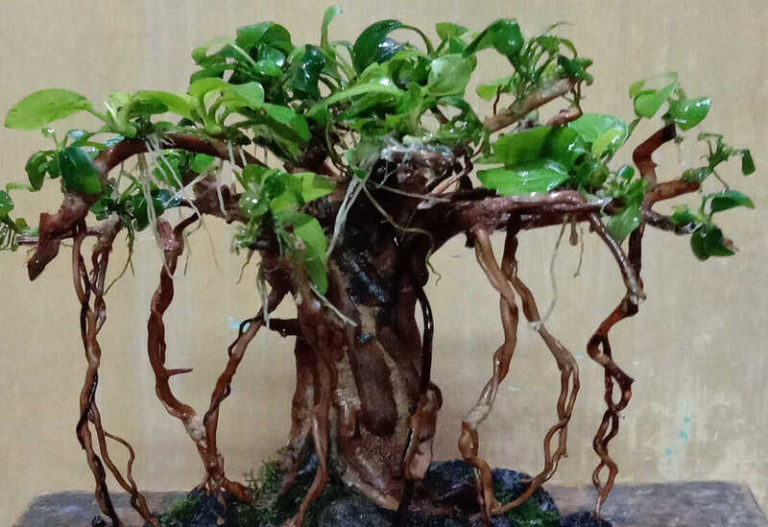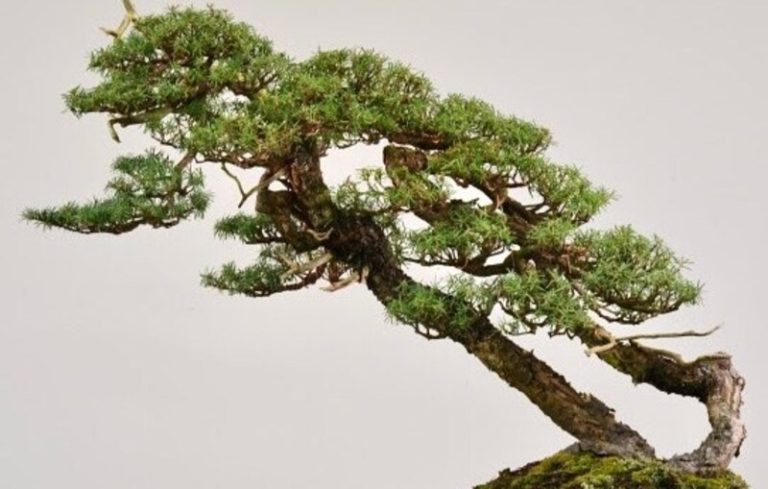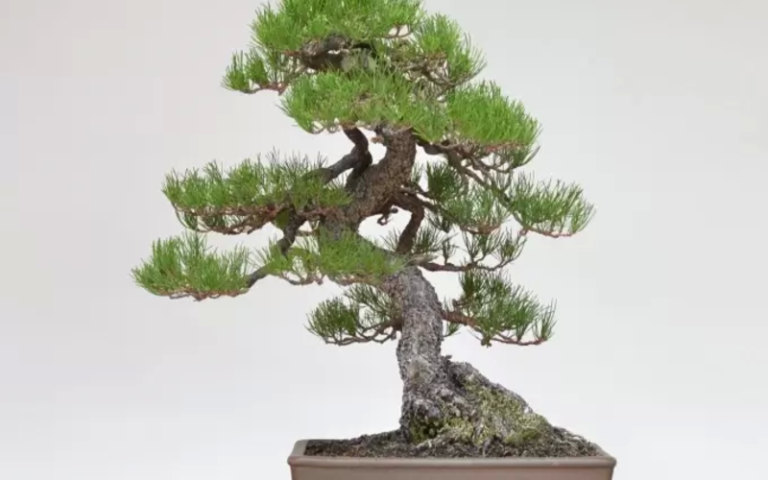Bonsai Olive Trees: The Ancient Tradition for Modern Living
Bonsai olive trees are miniature versions of olive trees that are grown in small containers. This practice originated in Japan and has become popular worldwide. Olive trees are known for their long lifespans and majestic beauty, and bonsai olive trees are no exception.
What are Bonsai olive trees?
Bonsai olive trees are small reproductions of olive trees that are grown using the bonsai method. Bonsai is a Japanese art form that involves growing and shaping young trees in pots to resemble miniature copies of full-grown trees.
Bonsai olive trees are grown in small pots and require careful attention to soil, potting, pruning, shaping, fertilization, watering, and pest management.
They are valued for their unique appearance and the sense of tranquility they can bring to a space. Olive trees are often seen as signs of peace, plenty, and long life in Mediterranean cultures, so bonsai olive trees can also have symbolic meaning.
Types of Bonsai Olive Trees
There are several types of olive trees that are suitable for growing as bonsai, including:
European Olive (Olea europaea): This is the most commonly used olive tree for bonsai cultivation. It has small leaves and produces small black olives.
Dwarf Olive (Olea europaea, “Little Ollie”): This is a small variety of the European Olive tree that is ideal for bonsai. It has small leaves and a compact growth habit.
Japanese Olive (Elaeagnus pungens): This is a small evergreen tree that is native to Japan. It has small leaves and produces small, edible fruits.
Russian Olive (Elaeagnus angustifolia): This tree has leaves that fall off and comes from Central Asia. It has small, silvery leaves and makes small fruits that can be eaten.
Wild Olive (Olea europaea subsp. africana): This is a small variety of the European Olive tree that is native to South Africa. It has small, green leaves and produces small, black olives.
Here are a few examples of olive tree species that may be cultivated as bonsai. Depending on their size, growth characteristics, and leaf appearance, other types may also function. It is essential to select a tree that thrives in your region’s growth circumstances and environment and to learn how to care for it.
Characteristics of Bonsai Olive Trees
Bonsai olive trees have a number of distinctive characteristics that make them unique and beautiful:
- Small size: Olive bonsai are miniature representations of mature olive trees. They often range in height from a few inches to a few feet. Its little stature makes them excellent for cultivation and exhibition inside.
- Twisted trunks and branches: Bonsai olive trees often have twisted trunks and branches, which add to their unique appearance. This is achieved through careful pruning and shaping over a period of years.
- Small leaves: Olive trees have tiny leaves that lend themselves nicely to bonsai culture. Typically, the leaves of a bonsai olive tree are significantly smaller than those of a full-grown olive tree.
- Gray-green foliage: Olive trees have gray-green foliage that is typical of Mediterranean plants. This coloration gives them a distinctive appearance that is well-suited to bonsai cultivation.
- Edible fruit: Some types of bonsai olive trees produce small, edible fruit. These can be harvested and used for cooking or eaten fresh, depending on the variety.
- Long lifespan: Olive trees live a long time, and bonsai olive trees are no different. With the right care, a bonsai olive tree can live for many years and bring its owner pleasure and beauty.
Generally, bonsai olive trees are lovely and unusual plants that are distinguished from other bonsai trees by a variety of distinguishing qualities. Bonsai aficionados favor them for their tiny stature, twisted trunks and branches, small leaves, gray-green foliage, and edible fruit.
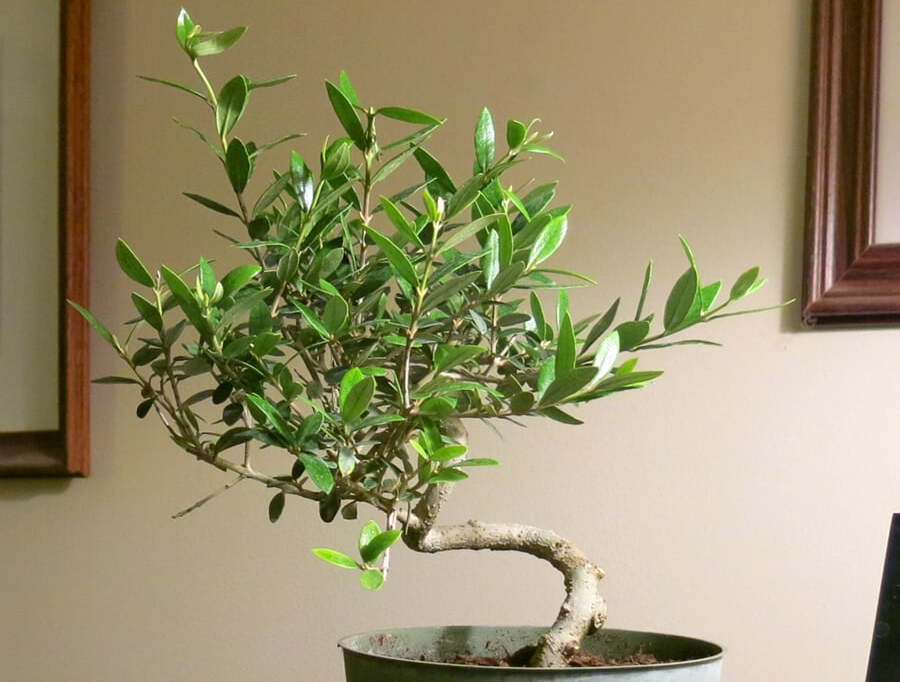
How to Grow Bonsai Olive Trees
Cultivating a bonsai olive tree requires talent and patience, but both novice and seasoned gardeners may enjoy the process. These are some procedures to take while cultivating an olive tree bonsai:
Choose a healthy olive tree: Look for a young olive tree that has a thick trunk and healthy leaves. You can either purchase a small olive tree from a nursery or grow one from seed.
Select the right pot: Choose a shallow pot with good drainage. Bonsai pots are a great option, but any shallow pot will work as long as it has drainage holes.
Prepare the soil: Olive trees prefer well-draining soil with good organic matter. A mixture of akadama, pumice, and lava rock is a good option for bonsai soil.
Prune the tree: Start pruning the tree as soon as you bring it home. Remove any dead or damaged branches and shape the tree by cutting back new growth.
Repot the tree: Repot the tree every few years or when the roots have outgrown the pot. When repotting, prune back the roots to keep the tree at a manageable size.
Water the tree: Olive trees love wet soil, but dislike being over-watered. When the soil seems dry to the touch, water the tree, but avoid allowing it to get soggy.
Fertilize the tree: Fertilize the tree during the growing season with a balanced fertilizer. Reduce fertilization during the winter months.
Train the tree: Use wiring to train the tree into the desired shape. Be careful not to damage the bark, and adjust the wiring regularly to avoid it cutting into the tree.
Protect the tree from pests: Pests such as scale insects and spider mites can pose a threat to olive trees. Regularly inspect the tree for symptoms of infection, and if required, apply an appropriate insecticide.
You may develop a lovely bonsai olive tree that will bring you years of joy and serenity by following these steps. Remember to be patient and provide the tree with the necessary care to flourish.
Benefits of Bonsai Olive Trees
There are several benefits to growing and caring for bonsai olive trees, including:
- Aesthetics: Bonsai olive trees are known for their unique and beautiful appearance. Their twisted trunks, small leaves, and gray-green foliage make them a visually appealing addition to any indoor or outdoor space.
- Stress relief: Caring for a bonsai olive tree can be a meditative and relaxing activity. It can help reduce stress and anxiety and promote feelings of calm and tranquility.
- Air purification: Like with other plants, bonsai olive trees contribute to air purification by absorbing carbon dioxide and emitting oxygen. This can assist enhance the quality of the air in your house or business.
- Symbolism: Olive trees are often associated with peace, abundance, and longevity in Mediterranean cultures. Having a bonsai olive tree in your home or office can help to evoke these positive qualities.
- Educational value: Caring for a bonsai olive tree can be a great learning experience, especially for children. It can help to teach them about plant care, patience, and responsibility.
- Sustainable living: An olive bonsai tree may be a low-maintenance option to bring nature indoors. It’s also a potential approach of decreasing your impact on the environment.
All things considered, bonsai olive trees are a good buy for individuals who value the serenity and aesthetics of nature. They have the potential to enhance the quality of your home or workplace, promote feelings of peace and relaxation, and facilitate ecologically responsible lifestyles.
How to Care and Maintain Bonsai Olive Trees
Proper care and maintenance are essential for the health and beauty of bonsai olive trees. Here are some tips for caring for and maintaining your bonsai olive tree:
Watering: Water the tree often, but don’t water it too much. Olive trees like soil that is moist, but if they are watered too often, they can get root rot. When the top layer of soil feels dry, water the tree and make sure the water runs out of the pot.
Fertilizing: Provide consistent, but not excessive, watering for the tree. Olive trees thrive in damp soil, but overwatering can cause root rot. Make sure the water can easily drain out of the container before adding more when the top inch or two of soil seems dry.
Pruning: Prune the tree regularly to maintain its shape and promote new growth. Remove any dead or diseased branches, and trim back new growth in the spring.
Wiring: Use wiring to shape the tree, but be careful not to damage the bark. Adjust the wiring regularly to avoid it cutting into the tree.
Repotting: Repot the tree every few years or when the roots have outgrown the pot. When repotting, prune back the roots to keep the tree at a manageable size.
Sunlight: To grow well, olive trees need a lot of sunlight. Put the tree where it will get full sun or some shade.
Temperature: Olive trees are cold hardy and can tolerate some frost. However, they prefer temperatures between 50°F and 80°F.
Pest control: Inspect the tree regularly for signs of pests such as scale insects and spider mites. Treat any infestations with an appropriate pesticide.
Soil: Bonsai olive trees prefer well-draining soil with good organic matter. A mixture of akadama, pumice, and lava rock is a good option for bonsai soil.
Bonsai Olive Trees Care Sheet
| Aspect | Care Tips |
| Watering | Water your Bonsai Olive Tree when the top inch of soil feels dry. Prevent overwatering or soil drying out. |
| Fertilizing | Balanced fertilizer every two weeks during the growth season. Decrease to monthly during dormancy. |
| Pruning | Before spring growth, prune your Bonsai Olive Tree. Remove dead, damaged, and diseased branches and shape the tree using sharp pruning scissors. |
| Wiring | Wire your Bonsai Olive Tree without wrapping it too tightly. Remove the wire after many months to avoid tree damage. |
| Repotting | Repot your Bonsai Olive Tree every two to three years with well-draining soil. Before repotting, prune and remove dead or rotting roots. |
| Sunlight | Bonsai Olive Trees like sun. Give your tree at least six hours of direct sunshine every day. |
| Temperature | Bonsai Olive Trees prefer 60-80°F (15-27°C) conditions. Keep your tree cool. |
| Pest control | Inspect your Bonsai Olive Tree for scale insects, mealybugs, and spider mites. Use insecticides as required. |
| Soil | Bonsai Olive Trees like acidic, well-draining soil. Employ peat moss, perlite, and sand or Bonsai soil. |
By adhering to these guidelines, you can ensure that your bonsai olive tree thrives and remains healthy and attractive for many years. Remember to be patient and provide the tree all the care and attention it need in order to develop into a gorgeous work of art.
Conclusion:
Bonsai olive trees are lovely and distinctive plants that demand special attention and care. They provide a variety of advantages, including aesthetic appeal, medicinal value, symbolic importance, and environmental advantages.
If you’re interested in growing a bonsai olive tree, you should conduct study and adhere to best methods for soil, potting, pruning, shape, fertilizer, watering, and pest control. Your olive bonsai tree may bring years of beauty and delight with the proper maintenance.
FAQ:
Q: What is a Bonsai Olive Tree?
A: A miniature version of an olive tree that is grown and trained to resemble a larger, mature tree.
Q: Can I grow a Bonsai Olive Tree indoors?
A: Yes, but it will require adequate sunlight and humidity.
Q: How often should I water my Bonsai Olive Tree? Water when the top inch of soil feels dry.
A: How do I fertilize my Bonsai Olive Tree? Use a balanced fertilizer every 2 weeks during growing season, once a month during dormant season.
Q: How do I prune my Bonsai Olive Tree?
A: Prune in early spring before new growth appears.
A: How do I wire my Bonsai Olive Tree? Use wiring to shape tree, but be careful not to wrap wire too tightly.
Q: How often should I repot my Bonsai Olive Tree? Every 2-3 years.
A: What kind of soil should I use for my Bonsai Olive Tree? Well-draining, slightly acidic soil mixture.
Q: How do I control pests on my Bonsai Olive Tree? Check regularly for pests and treat with natural or chemical insecticide as needed.
Q: Can I propagate my Bonsai Olive Tree?
A: Yes, by taking cuttings in the spring or fall and encouraging root growth with rooting hormone.
Also Read:
Cascade Juniper Bonsai: A Unique and Timeless Gift for Nature Enthusiasts and Gardeners


